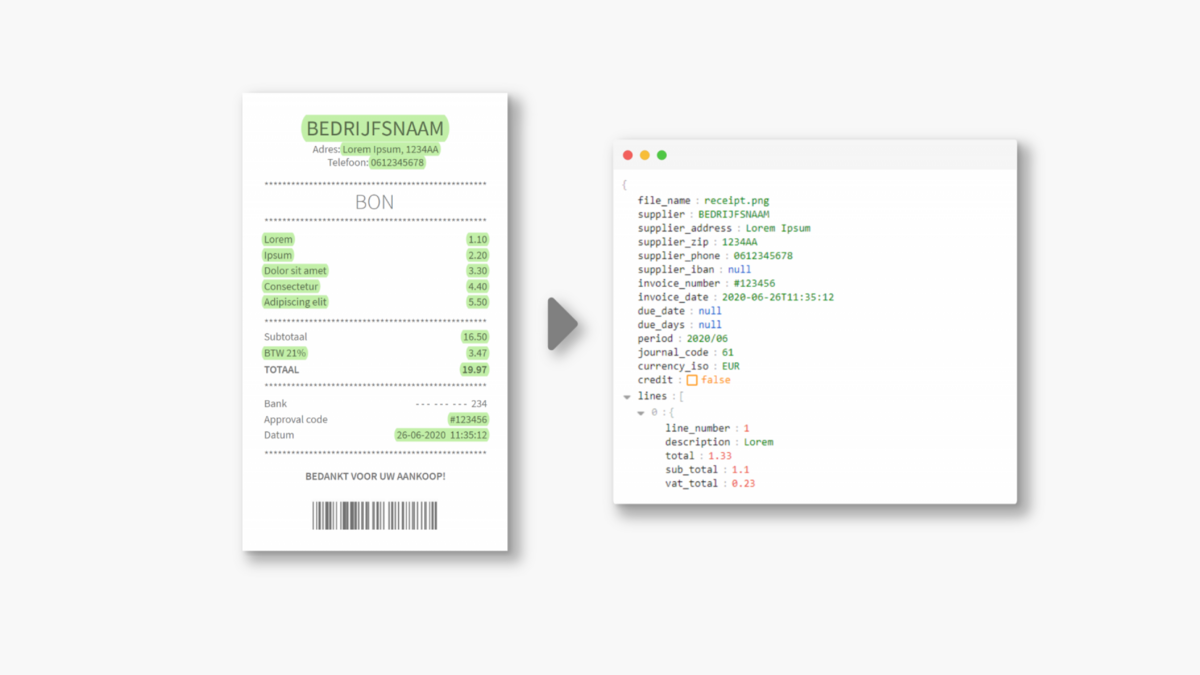
OCR, which stands for Optical Character Recognition, is a technology used to convert printed or handwritten text into digital text. This allows computers to understand and process text. This makes it possible to search, edit and analyse documents without manually retyping them.
The genesis
The origins of OCR technology date back to the 1950s. Scientists at the time began experimenting with automatic reading of printed text. At that time, the first rudimentary OCR systems were developed to recognise text and convert it into digital form. However, these early systems were limited in their accuracy and speed.
The development
Since then, OCR technology has made significant progress. With the advent of more powerful computers and advanced algorithms, OCR is now capable of recognising a wide range of documents, texts and images. Modern OCR software allows users to extract text from a variety of sources. These include scanned documents, photos and PDF files. These developments have made OCR technology an essential tool for digital archiving, text recognition and document automation.
By taking advantage of TriFact365’s advanced OCR technology, organisations can transform their invoice processing process and realise the benefits of automation and efficiency.
As an organisation, why would you want to use OCR software?
As an organisation, using OCR software is a smart move for several reasons. First, it can improve the efficiency of your document management. By automatically recognising and digitising text, you save time that would otherwise be spent on manual data entry. This reduces the risk of errors and increases productivity.
OCR software also helps archive and organise documents. Search through digital documents easily, allowing you to speed up and improve access to important information. This is especially useful for companies managing large volumes of documents and wanting quick access to specific information.
How can you take the plunge as an organisation?
Implementing OCR technology within your organisation is a worthwhile investment. However, implementation requires careful planning and execution. First, it is important to identify your organisation’s needs and objectives. Which processes can be improved by using OCR? How many documents need to be processed?
Next, it is essential to choose the OCR software that suits your organisation’s needs. There are several options available, ranging from standalone software to integrated solutions within existing systems. Make sure you choose software that is user-friendly and meets your organisation’s specific requirements.
Finally, it is important to properly train and support your employees in using the new technology. Provide clear instructions and offer training to ensure that your team can use OCR software effectively and reap its maximum benefits. With the right approach, using OCR technology is a valuable addition to your organisation’s operational efficiency and competitive advantage.
How does TriFact365 use OCR technology?
TriFact365 is an invoice processing and document recognition software solution. Using OCR technology, TriFact365 enables organisations to automate and optimise their invoice processing process. By scanning and recognising text and data on invoices, TriFact365 eliminates the need for manual data entry and minimises the risk of errors.
Benefits of OCR technology applied by TriFact365
By taking advantage of TriFact365’s advanced OCR technology, organisations can transform their invoice processing process and realise the benefits of automation and efficiency.
- Saving time: TriFact365’s OCR technology allows invoices to be processed quickly, saving your organisation valuable time that would otherwise be spent on manual entry.
- Accuracy: By using advanced algorithms and machine learning, TriFact365 ensures that data on invoices is accurately recognised and processed, minimising errors.
- Efficiency: Automating the invoice processing process increases your organisation’s operational efficiency, allowing you to spend more time on core activities and strategic initiatives.
- Cost savings: By reducing manual work and minimising errors, TriFact365 helps reduce operational costs and improve your organisation’s overall profitability.
- Accessibility: Archive invoices easily with TriFact365’s OCR technology. That way, you can quickly access key information for financial analysis and reporting.


